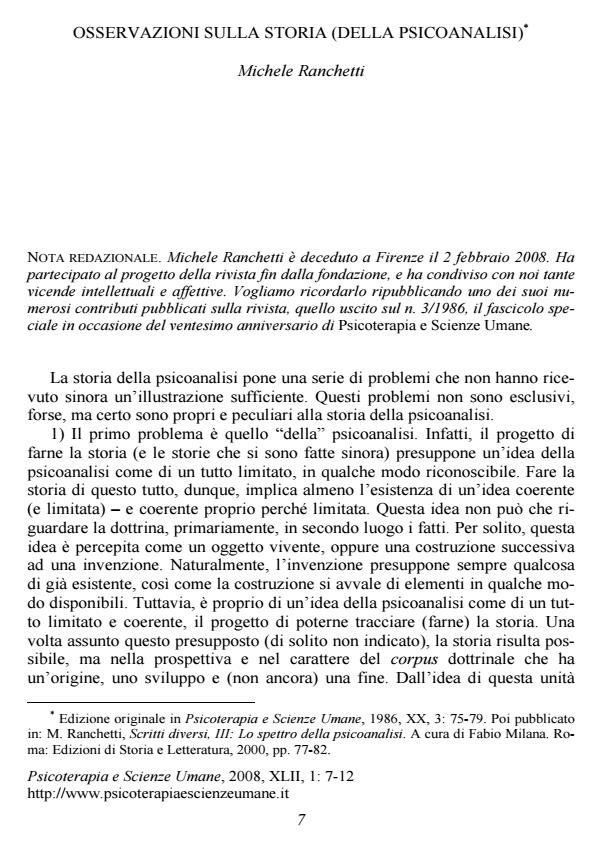Osservazioni sulla storia (della psicoanalisi). Contributi di Michele Ranchetti in "Psicoterapia e Scienze Umane"
Journal title PSICOTERAPIA E SCIENZE UMANE
Author/s Michele Ranchetti
Publishing Year 2008 Issue 2008/1
Language Italian Pages 6 P. 7-12 File size 110 KB
DOI
DOI is like a bar code for intellectual property: to have more infomation
click here
Below, you can see the article first page
If you want to buy this article in PDF format, you can do it, following the instructions to buy download credits

FrancoAngeli is member of Publishers International Linking Association, Inc (PILA), a not-for-profit association which run the CrossRef service enabling links to and from online scholarly content.
The complex relationship between the history of psychoanalysis and the very identity of psychoanalysis is examined. Among others, the following topics are reviewed: Can psychoanalysis be considered a limited and unitary body of knowledge; Its possible definition, especially vis-à-vis other disciplines; Does a specific psychoanalytic invention exist; The problem of dissident movements; Psychoanalysis as a science within other sciences, as a history within all possible histories of sciences; Psychoanalysis as a natural science and its relation with history as a discipline; Psychoanalysis as interpretation of history; Psychoanalysis as a great anti-ethics; The objects of psychoanalysis; The relationship between reality and memory of reality; The influence of psychoanalysis on history. (This paper already appeared in Psicoterapia e Scienze Umane, 1986, XX, 3: 75-79, and is reprinted in memory of the author, who died on February 2, 2008). [KEY WORDS: history and psychoanalysis, science and psychoanalysis, interpretation of history, relationship between psychoanalysis and other disciplines, identity of psychoanalysis]
Michele Ranchetti, Osservazioni sulla storia (della psicoanalisi). Contributi di Michele Ranchetti in "Psicoterapia e Scienze Umane" in "PSICOTERAPIA E SCIENZE UMANE" 1/2008, pp 7-12, DOI: